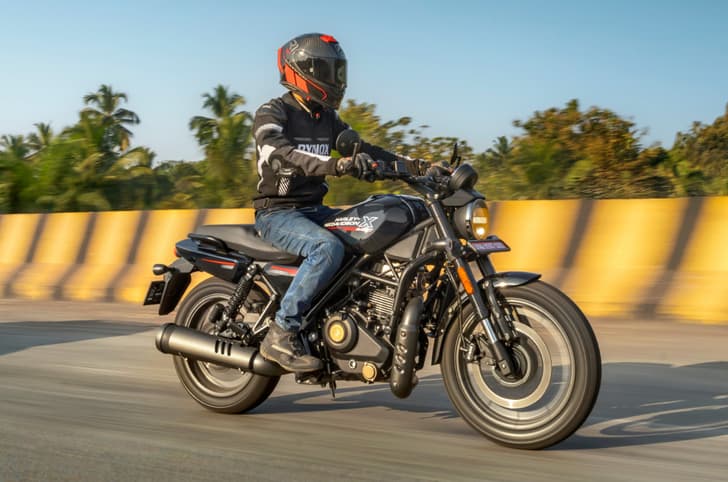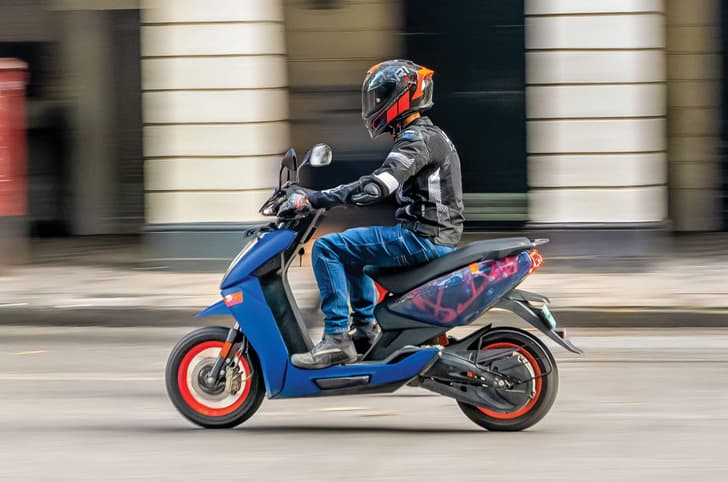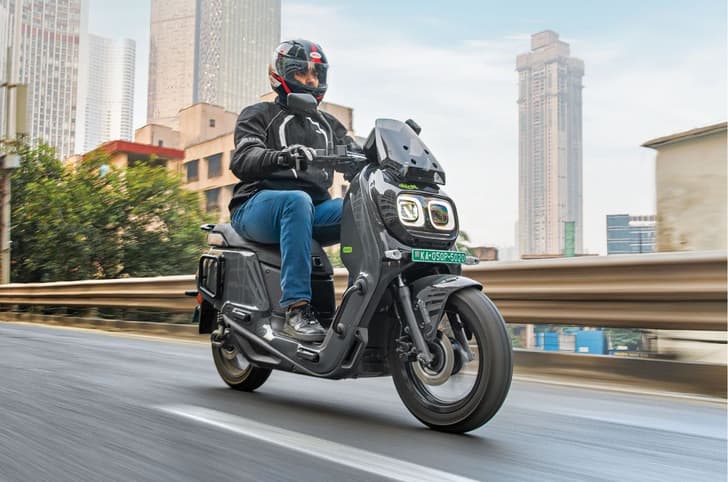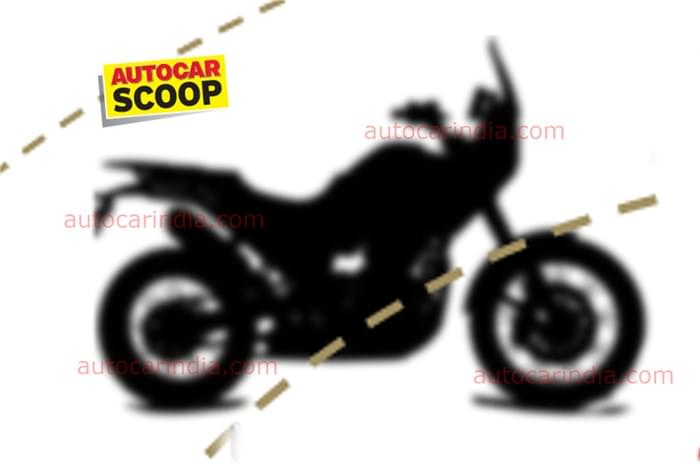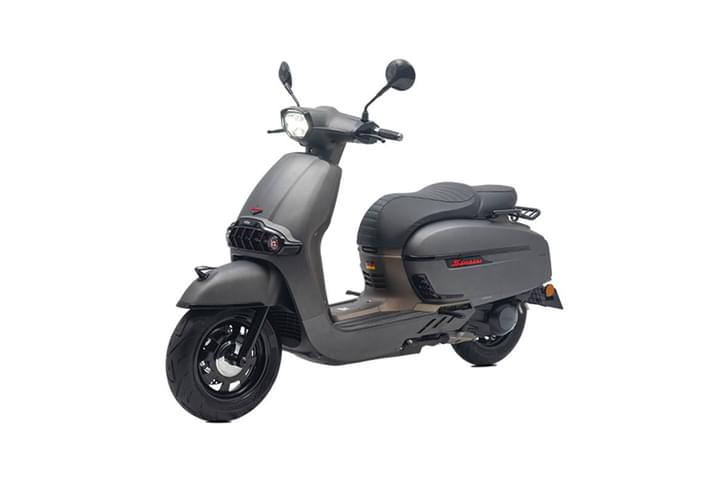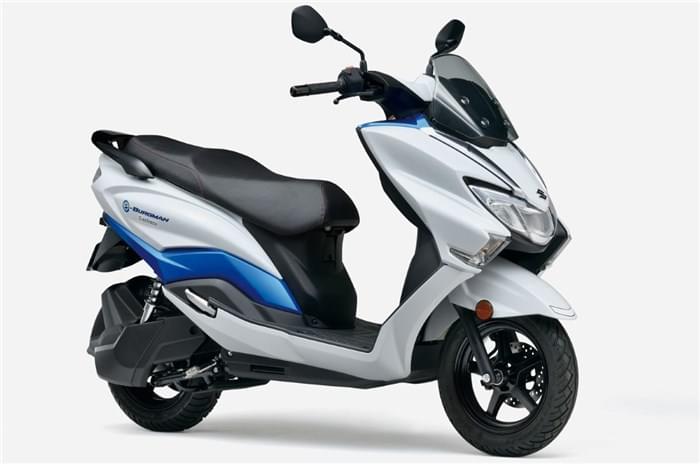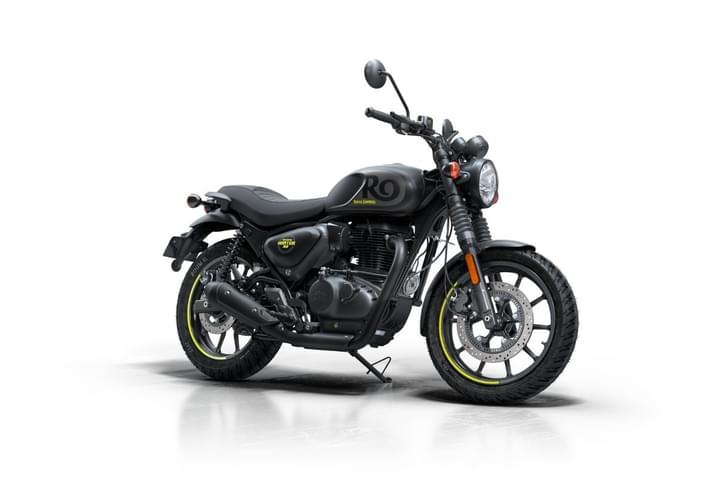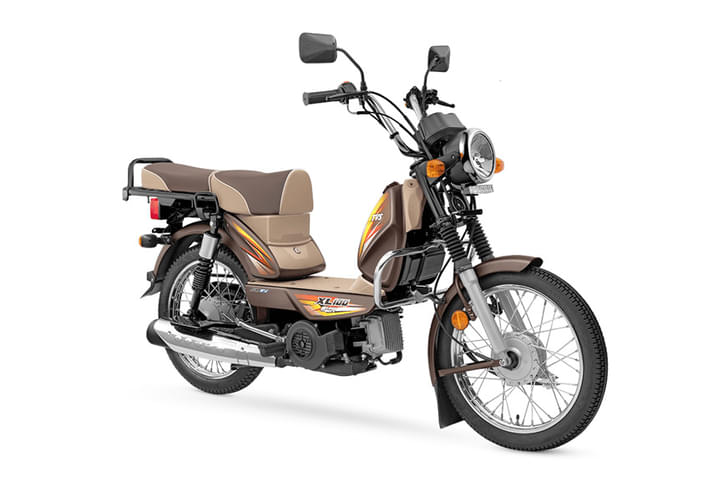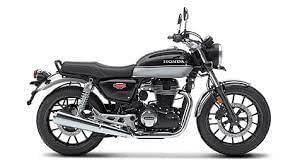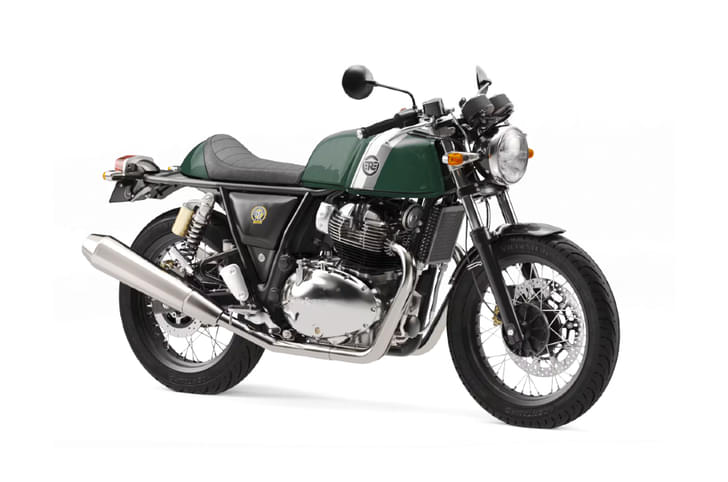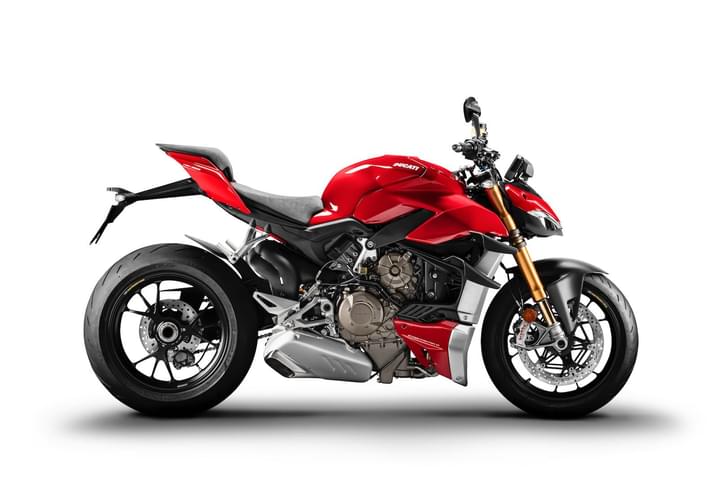The question posed in the introduction to this story may seem uncalled for. After all, the R15 V3.0 is better-looking, more powerful, has more equipment on offer and is, crucially, faster. But has its evolution come from a sense of performance-oriented righteousness? Or has it emerged, instead, from a sense of catching-up-to-do?
Design and style
Let’s leave this bit for the end and plunge right into the details of this attractive, new motorcycle. This is the third generation of the R15, with the first-ever model having launched way back in 2008. And, a decade later, what do we have in the name of evolution (oh, that word again!)? Lots, thankfully. Firstly, it clearly has been at the receiving end of R1/R6-inspired bodywork and it works gorgeously in this pint-sized package, too. I often find myself saying looks are subjective but I think the R15 V3.0 warrants universal agreement on its styling. It’s terrific and, more importantly (and finally), a balanced overall design. Previous R15s have been underwhelming in some aspect, but this one is a job completed perfectly.
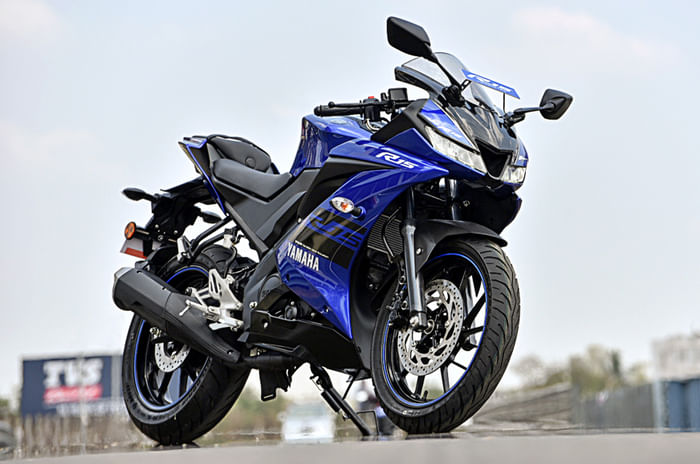
The new design has introduced twin-eye LED headlights which look sinister, especially with that air duct housed between them. The bubble visor is neatly integrated and feels substantial. The ‘gills’ on the fuel tank (now 11 litres, instead of 12) scream ‘R1’ and the tail-end does exactly the same as well. Another nice touch is the two-tone paint job (black on blue is my pick of the lot, the other one being a gloss red on matte grey), which adds to its lithe, aggressive design. The new all-digital instrument cluster is horizontally laid out (with a white backlight as well as a shift-light in the same shade) and is informative but not complex. Overall, the R15 V3.0 looks impressive – if you hadn’t figured that out already – and here’s a design that will have a magnetic effect on prospective buyers.
Engine and performance
Now, the R15 is sacred to Yamaha so when it says ‘new’, it should be meant in an acutely literal sense. So then, is it an all-new motor? Not quite. Alright, so the 155cc, liquid-cooled, SOHC, four-valve motor may be familiar in its basic construction but has noticeably different implications in its current form. To elaborate, the motor now has a 1mm larger bore, a new intake and exhaust system and it also sports Variable Valve Actuation (VVA). The VVA system essentially employs a solenoid coil-based valve operation mechanism that utilises low-cam and high-cam intake rocker arms and this has an appreciable impact on its performance at either end of its rev range. To translate it into relatable context, previous R15s, as most of you would know, suffered from unimpressive low-end performance and VVA takes care of that remarkably well. The VVA also helps the engine feel meaty even well past 8,000rpm and that, on a relatively fast motorcycle such as this one, is a lot of fun. Not to mention, the motor now produces 19.3hp at 10,000rpm and 15Nm of torque at 6,500rpm, which has contributed considerably to its performance.
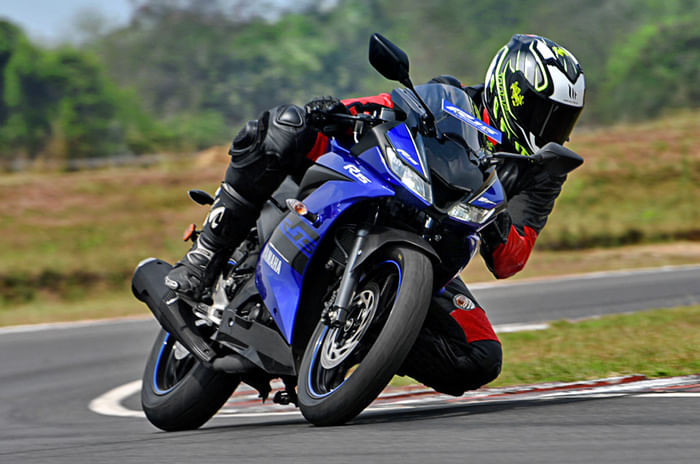
Also new is a slip-and-assist clutch, making the R15 V3.0 the first 150cc motorcycle in India to offer this feature. As a result, you get a clutch lever that’s light in operation and a rear wheel that’s no longer interested in hopping under hard downshifting. On the R15 V3.0, however, this unit works so well that you try and find excuses to downshift hard! The transition from higher to lower gears is beautiful and it irons out your imperfections (or mine, in this instance) and quests to push the bike’s limits in the most impressive manner. This is, undoubtedly, the best engine-gearbox combination Yamaha has offered on the R15 yet and, just for this reason, some of its engineers deserve a serious hike in their annual contract.
Ride and handling
Okay, enough talk. Let’s get out of the pit lane! Out on the MMSC racetrack in Sriperumbudur, Chennai, the R15 initially came across as borderline edgy. The aggressive turn-in (thanks to the sharper rake) is immediately noticeable and given the even more committed riding position, I thought Yamaha had severely narrowed down its target audience to freshly-licensed, skinny lads with a dim view on social etiquette. This, thankfully, evaporated within four laps of the circuit. Then, it was back to the typically effortless and intuitive pattern of responses. Alright, the V3.0 isn’t as ‘natural’ as the V1 was, but back in 2008, most of us had only begun to toy with the concept of knee-downs (elbow-downs weren’t even a thing then!), so it’s also down to our own evolution as riders. Mine hasn’t been the most resplendent, frankly speaking.
Unlike the R15 V3.0 on sale internationally, the Indian (and also the Australian) version makes do without an upside-down fork and trades it in for a fatter (than before), 41mm telescopic fork. Is this a bad thing? Not really, since the conventional fork is progressive and feels appropriate under very hard braking and quick changes in direction. Given my racetrack-only outing on the R15, I could only analyse these aspects of the fork’s performance and a road stint should, as ever, provide crucial insights. The linkage-type monoshock does feel stiffer than on older R15s, however; this was certainly an asset around the MMRT, which is a fast, yet technical circuit that takes no prisoners. Ground clearance, meanwhile has been upped by 10mm (to 170mm) which should help it clear speed breakers with ease – not that it was an issue as such. The brakes, on the other hand, aren’t the best in the business. The front brake feel was inconsistent across the bikes Yamaha had lined up for us to ride and even with the best of the lot, the front disc (bigger than the V2’s, at 282mm) just didn’t have the kind of bite you’d expect from a motorcycle that’s firm in its resolve to make the most of every corner. This isn’t a hazard but it’s not an evolution either. Here’s an area that needs improvement and Yamaha will do well to look into it. Having said that, it certainly didn’t miss ABS on the track, but the same can't be said for the road. Nevertheless, ABS is likely to arrive only by the government-mandated deadline of April 2019 (for products launched before April 2018), no matter how nicely you and I ask.
In a move that will raise eyebrows, the motorcycles lined up for us were shod with the optional extra Metzeler. Yes, I didn’t say Metzeler in the plural because, oddly enough, this option is applicable only to the rear end! A tyre mismatch isn’t a great idea to begin with but, for every conceivable reason, it’s the front-end that needs to offer maximum grip, not the other way round! Backing up this line of thought was the performance of the stock 100 section MRF Nylogrip rubber at the front-end; note that the MRFs aren’t radials either). My confidence struggled to find inspiration in the stock front tyre and it was only after we dropped air pressures to 27psi at the front (that’s 2 less than stock) that I could begin to push it. The trust, however, came in much later.
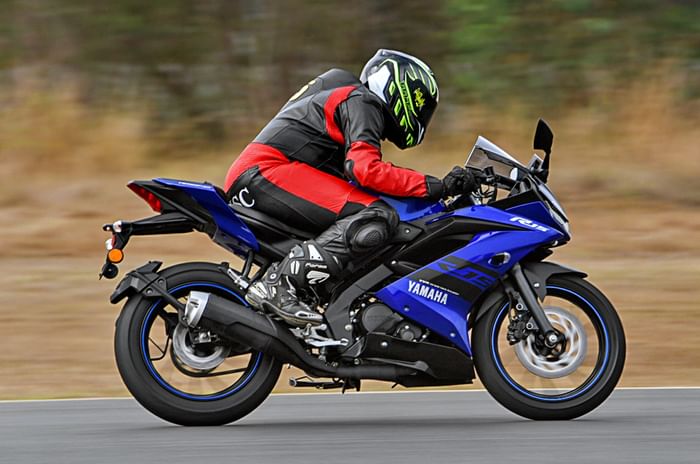
When it did, the R15 was quick to get into its element. Here’s a motorcycle that loves to be cornered hard, and it likes to stay leaned over even at triple digit speeds. The aforementioned underwhelming front tyre aside, the R15 is indulgent in a pure, unfiltered way. Aggressive cornering sets the context for the R15’s packaging as a whole, since everything from the slipper clutch to the eager motor and, of course, the Deltabox frame, comes together to offer stopwatch-derived performance. The V3.0 has been prepped for aggressive riding, thanks to a sharper rake and a new swingarm; and if you’re equally athletic in your riding style, you’ll love the new R15. Despite a higher kerb weight (139 kg; 3kg heavier than the V2), the R15 feels like an R15 should – compact and immediate. This is also down to the shorter wheelbase (1,325mm, 20mm lesser) and decreased trail (88mm as opposed to 98mm). The R15 V3.0 is, overall, more clinical than it has ever been and this makes for a fun experience since it is, ultimately, a small-displacement motorcycle with an ingrained agenda to punch above its weight.
Before you ask, yes, it’s a better performer. An R15 is nothing without its dynamics, which should explain why the subject got precedence over engine performance in this review – but that’s out of the way now. The busy single-cylinder thrum is vocal right from idle and it takes a refined tone down to its 11,500 rpm redline. The older R15s were, perhaps, a tiny bit smoother, but then the V3.0 is running a higher compression and makes more power as well, which should account for some stress. As I have implied above, this engine and gearbox are a match made in heaven, and in effect, it translates to a happy performer. The R15 V3.0 is forever excited about being ridden fast and hard and all of it is conveyed in a linear, progressive manner. However, with this being a small displacement performance motorcycle, there’s only so much tractability you can ask for. In other words, pick your gears wisely if you want the best out of the motor, especially towards the top. Having said that, the R15 V3.0 certainly has an enjoyable top-end (if not much of a top-speed – about 130kph or so on the speedo) which feels very usable even close to its redline.
Not everything’s perfect about it, though. For one, it’s the riding position itself. Riders above 5ft 10in will find it cramped, but it’s not a deal breaker and it does seem roomier than the V2. The riding geometry is now even more committed than before, given that the clip-ons are set lower than before and the seat height being 15mm taller (at 815mm). While I didn’t mind this on the racetrack, one urban commute is all it will take to deliver the verdict on this aspect – if you can’t guess it already, that is. Another area where Yamaha needs to log in the hours is quality. You don’t expect strangely rough and inconsistent welds and surfaces (the chassis and the handlebar triple clamp being prime examples) on an R-series machine and certainly not on one that costs Rs 1.25 lakh. The switchgear, too, seems to have come off the FZ25 and while that’s not a burdening disappointment, it wouldn’t hurt to see more premium and exclusive switches from Yamaha. Lastly, while LED lights are certainly the future, I hope the ones on the R15 don’t turn out to be anything like the weak and jittery FZ25’s.
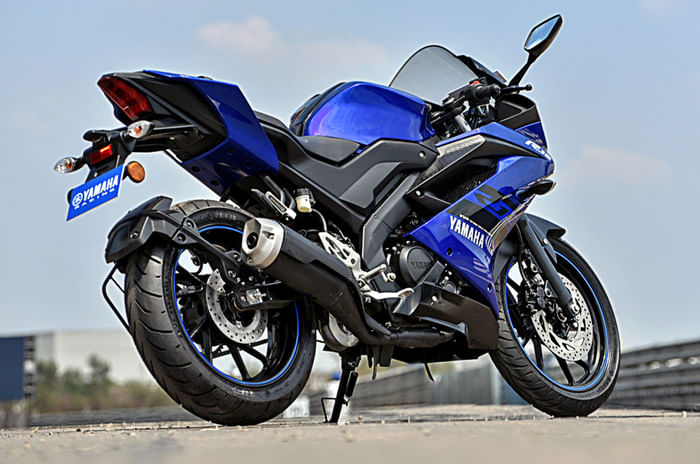
Verdict
Finally, coming back to the question we started out with. Is this really a heartfelt evolution then? Or is it a case of Yamaha finally deciding to catch up? An unfair comparison this may be, since 2009 was a different era for us as motorcycle enthusiasts. However, there was sincerity to the original R15 project (for example, much better tyres in just the right size that was required for the power) that the V3.0 possesses to a lesser degree. The first-ever R15 set the tone right, but the V3.0 – with merits in abundance – isn’t a revolutionary leap ahead of the original concept, but still takes it a good deal forward. It is undoubtedly a better, more potent motorcycle than any other R15 has ever been. For us enthusiasts, that’s simply very good news – at Rs 1.25 lakh (ex-showroom, Delhi) it surely is. Having said that, the R15 V3.0 isn’t magical – it’s fun but not a fascinating new formula that we haven't tasted before. But as a great learner bike for the mountain road or racetrack, it still cannot be beat. If that's what you're looking for, the timing is just right to buy those new knee sliders and a set of fluorescent yellow ‘46’ stickers!






